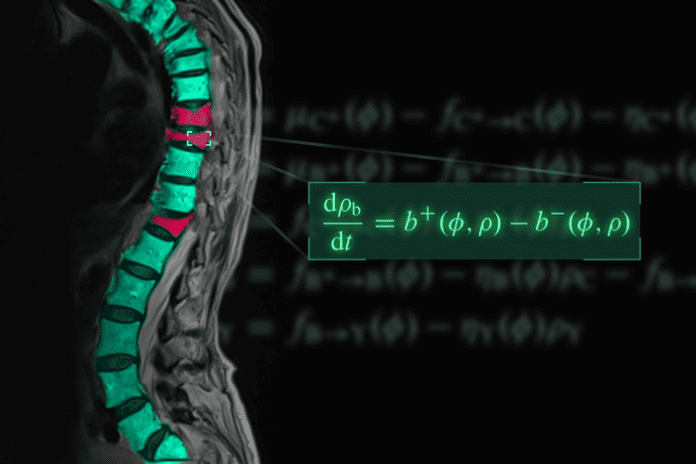
A new mathematical model could help clinicians choose effective combinations of medications for postmenopausal osteoporosis.
Postmenopausal osteoporosis occurs when the sudden loss of oestrogen during menopause interferes with the repair of wear and tear on bones. There are currently several medications on the market to treat postmenopausal osteoporosis, and these can be combined, but there is little evidence of effective combinations.
To address this missing information, researchers from Fresenius Medical Care Germany and other institutes designed a model that may improve treatment for postmenopausal osteoporosis and reduce medication side effects through personalised treatment plans.
The findings were published in eLife.
Developing a mathematical model of postmenopausal osteoporosis
“We wanted to know if there are treatment combinations that would work considerably better than those tested and currently used in clinical practice,” said first author David Jörg, Senior Scientist in the Biomedical Modelling and Simulation Group, Fresenius Medical Care Germany, Bad Homburg, Germany. “If so, then this could be beneficial for treating a large number of osteoporosis patients by increasing their bone strength and reducing their risk of bone fracture risk more than standard therapies currently allow.”
The researchers designed a mathematical model of bone renewal that predicts the effects of postmenopausal osteoporosis medications. The model is based on the latest evidence about the process of old bone breaking and how new bone is created and addresses how different osteoporosis medications work. To verify the accuracy, they tested predictions on data from clinical trials.
The team tested the effects of adjusting the order of different osteoporosis medications. The model illustrated that some combinations in a specific order performed significantly better than others. The team found combinations that cause the most rapid increases in bone density did not always strengthen the bones long-term, and instead can cause a rebound of increased bone loss after treatment stops.
“These results show us why the order in which osteoporosis medications are taken is important for short and long-term treatment success in patients,” commented co-author Doris Frutiger, Director of the Biomedical Modelling and Simulation Group, Fresenius Medical Care Germany.
The model can be applied to patients with bone loss
Despite the model being specifically designed for postmenopausal osteoporosis, the researchers outlined that it could be adapted to discover treatment combinations for patients with bone loss – from medications or medical conditions. For example, those who take corticosteroid medications or have gastrointestinal diseases.
“As our model could potentially predict the effects of a broad range of complex drug combination therapies beyond those used for its development, it could be used for the design of future clinical trials,” said senior author Peter Kotanko, Research Director at the Renal Research Institute, New York, US, and Adjunct Professor of Medicine and Nephrology at the Icahn School of Medicine at Mount Sinai, New York.
Kotanko added that general limitations of the model should be considered: “However, we’ve shown that not only can the model be used as a starting point for forecasting osteoporosis therapy success, but it also highlights the role of mathematical descriptions in helping us understand the biological principles of how drugs work.”










